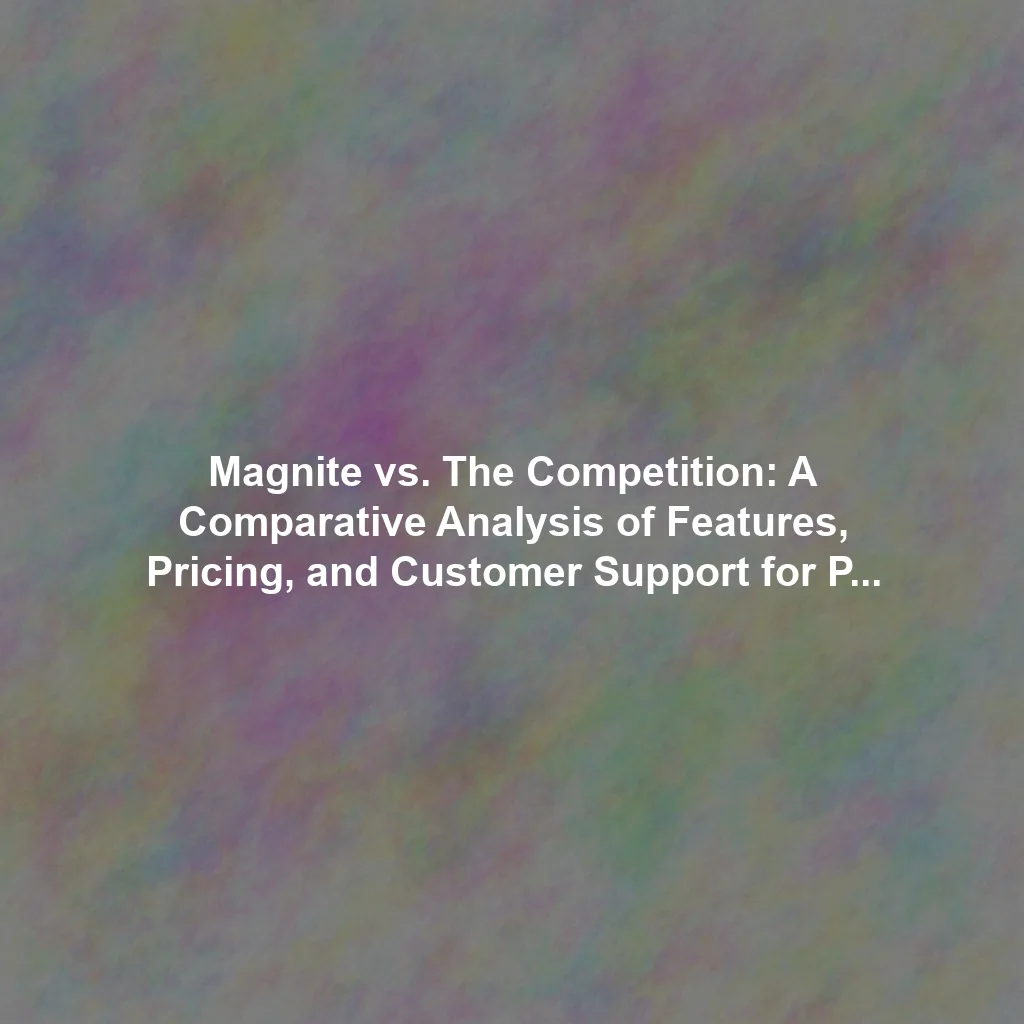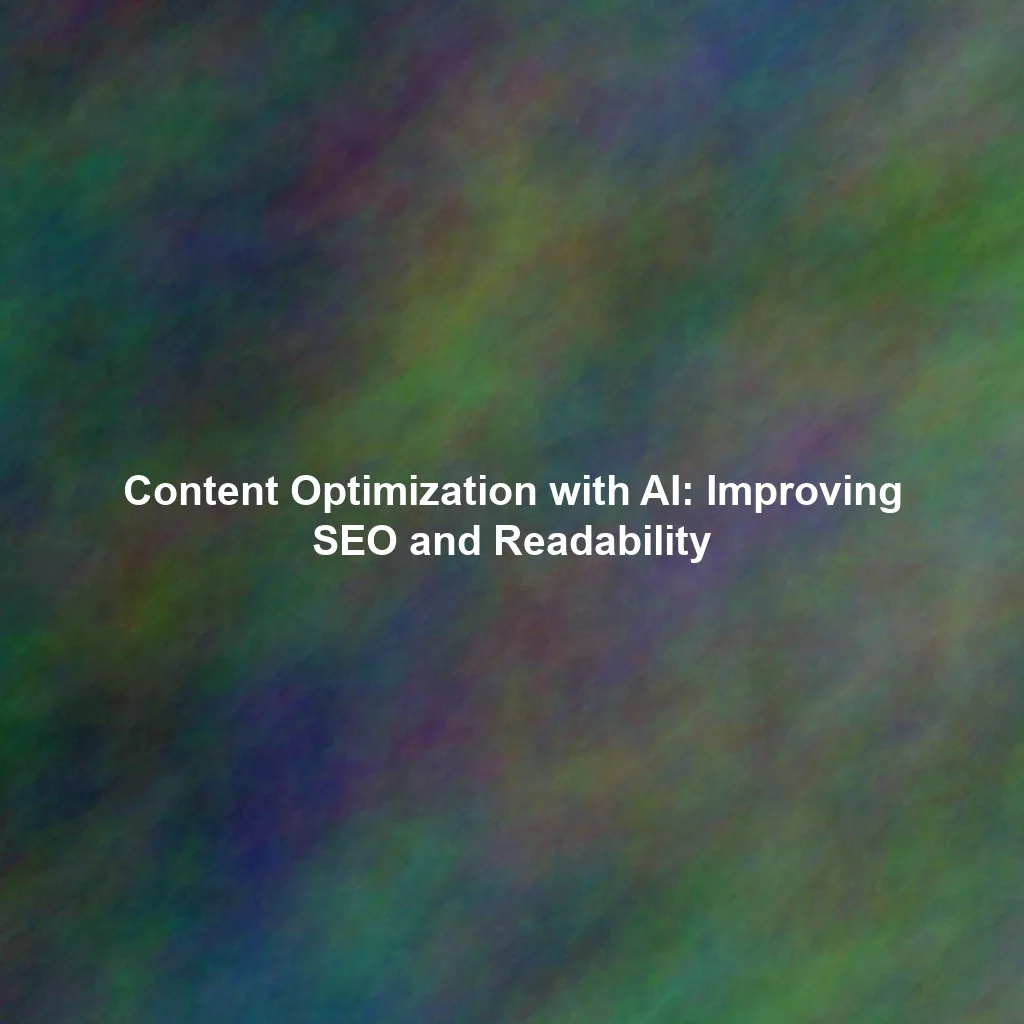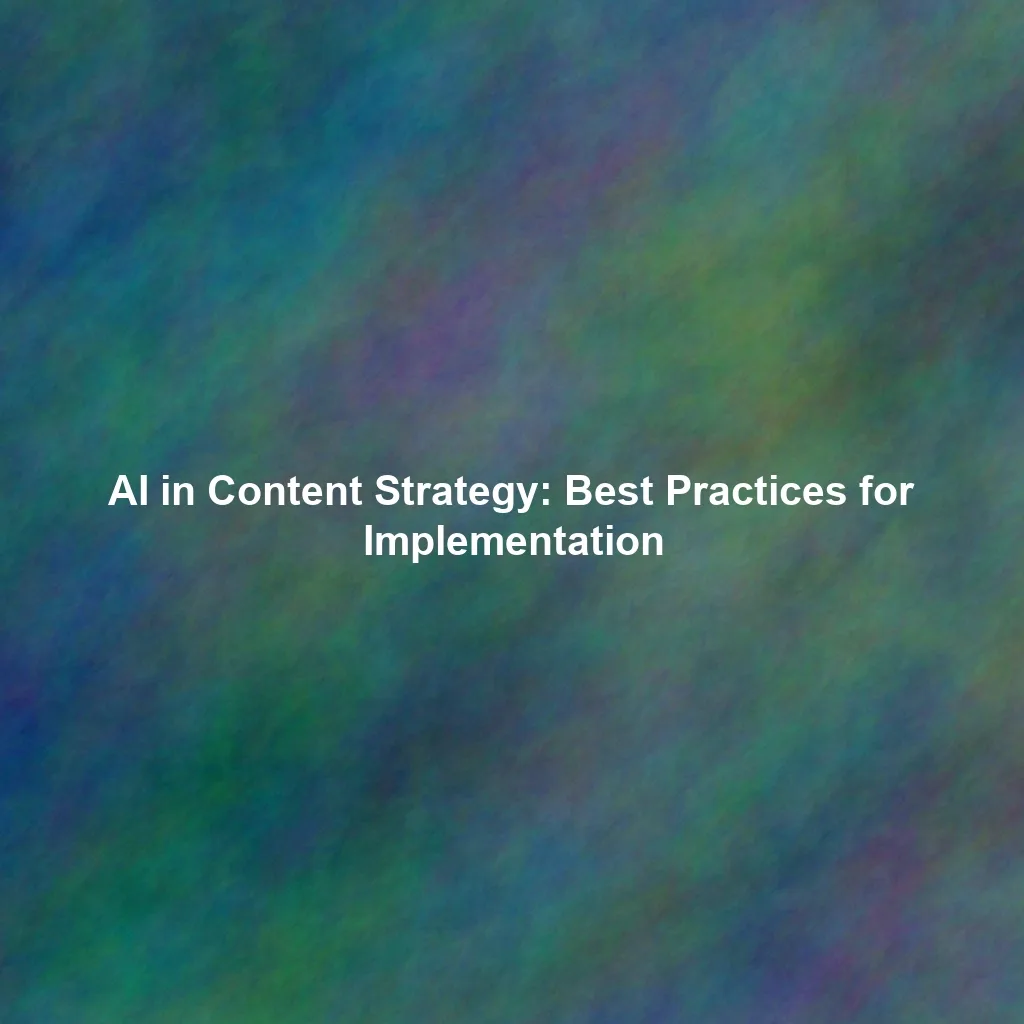This article aims to provide an unbiased, in-depth comparison of Magnite against other prominent programmatic advertising platforms. We will meticulously examine key aspects such as their core features, pricing models, the quality and responsiveness of customer support, and their integration capabilities within the broader ad tech ecosystem. Our overarching goal is to equip marketing leaders, media buyers, and publishing executives with the granular information and strategic insights needed to make informed decisions, ensuring they select a platform that is perfectly tailored to their specific operational needs, business objectives, and long-term growth aspirations.
Understanding the Programmatic Advertising Ecosystem: A Primer
Before diving into the specifics of individual platforms, it’s essential to establish a foundational understanding of programmatic advertising itself. At its core, programmatic advertising is the automated buying and selling of digital advertising space. This automation is facilitated by sophisticated algorithms and real-time bidding (RTB) mechanisms, which allow advertisers to bid for ad impressions in milliseconds, targeting specific audiences based on a multitude of data points.
- Demand-Side Platform (DSP): Software used by advertisers to buy ad impressions across various publishers. Examples include The Trade Desk, MediaMath, and Google Display & Video 360.
- Supply-Side Platform (SSP): Software used by publishers to sell their ad inventory to advertisers. SSPs help publishers manage their ad space and maximize revenue. Magnite and PubMatic are prime examples.
- Ad Exchange: A digital marketplace where advertisers (via DSPs) and publishers (via SSPs) buy and sell ad inventory through real-time auctions.
- Data Management Platform (DMP): A centralized platform that collects, organizes, and activates audience data for targeting and personalization.
- Ad Server: Technology that stores advertisements and delivers them to web pages or apps. It also tracks ad performance.
Understanding these interconnected components is vital for navigating the programmatic landscape effectively. For a comprehensive overview, refer to Wikipedia’s article on Programmatic Advertising.
Platforms like Magnite, Google Ad Manager, PubMatic, and Xandr act as crucial intermediaries within this ecosystem. They connect advertisers with publishers, facilitating the efficient delivery of highly targeted ads to the right audience at the optimal moment. This automation removes much of the manual, human-intensive process of traditional ad buying, leading to greater efficiency, scalability, and precision.
Magnite: A Deep Dive into Features and Strengths
Magnite emerged from the merger of Rubicon Project and Telaria, consolidating their strengths to become a formidable independent SSP. Its primary focus is on providing publishers with unparalleled control over their ad inventory and maximizing their revenue streams. Magnite prides itself on its neutrality, asserting that as an independent entity, it avoids the potential conflicts of interest that platforms owned by large media buyers might face. This independence is a significant selling point, particularly for publishers wary of platforms that also operate as demand-side players.
Key Features and Core Strengths of Magnite:
- Unified Platform: Magnite offers a truly unified platform that consolidates various advertising channels. This includes traditional display advertising, robust video capabilities (especially in Connected TV (CTV) and Over-The-Top (OTT) streaming), and mobile advertising (both in-app and mobile web). This consolidation simplifies operations for publishers and allows for holistic inventory management.
- Advanced Audience Targeting: The platform provides robust audience segmentation and targeting options. This enables advertisers to create highly personalized campaigns that reach specific demographic, psychographic, and behavioral segments, leading to more relevant ad delivery and improved campaign performance.
- Transparent Reporting and Analytics: Magnite emphasizes transparency, offering detailed reporting and analytics dashboards. Publishers and advertisers can track campaign performance with granular data, identify areas for optimization, and gain clear insights into auction dynamics and revenue generation.
- Header Bidding Expertise: Magnite is a strong advocate and enabler of header bidding, a technique that allows multiple demand sources to bid simultaneously for ad inventory before the ad server is called. This increases competition for ad space, enabling publishers to maximize their revenue by ensuring they always get the highest possible bid.
- CTV/OTT Leadership: Magnite is widely recognized as a leader in the rapidly expanding CTV/OTT advertising space. They offer specialized solutions tailored to the unique demands of streaming video, including advanced audience addressability, brand safety controls, and measurement capabilities for non-linear TV environments. This leadership positions them strongly in a crucial growth area for digital advertising.
- Identity Solutions: In a post-cookie world, Magnite is actively developing and integrating various identity solutions to help publishers and advertisers maintain audience addressability and measurement without relying on third-party cookies.
Magnite’s Strengths Summarized: Independence (minimizing conflict of interest), strong and specialized CTV/OTT capabilities, a truly unified platform across diverse ad formats, and a commitment to transparent reporting and auction mechanics.
Comparing Magnite to Key Competitors: A Strategic Analysis
To make an informed decision, it’s essential to benchmark Magnite against other leading players in the programmatic advertising space. We will focus on three prominent platforms: Google Ad Manager (GAM), PubMatic, and Xandr (formerly AppNexus). Each offers distinct advantages and caters to slightly different needs within the ecosystem.
Magnite vs. Google Ad Manager (GAM)
Google Ad Manager (formerly DoubleClick Ad Exchange and DoubleClick for Publishers) is arguably the most ubiquitous and comprehensive platform in the ad tech landscape, offering both SSP and robust ad server functionalities. Its pervasive presence, particularly among publishers, makes it a critical comparison point.
- Features: GAM boasts an incredibly wide range of features, including advanced ad serving, sophisticated yield management tools, comprehensive reporting, and robust audience solutions. Its tight integration with other Google products like Google Analytics, Google Ads, and Google Display & Video 360 (DV360) creates a powerful, interconnected ecosystem for both publishers and advertisers.
- Pricing: GAM primarily utilizes a revenue-sharing model. The exact percentage Google takes can vary significantly based on the publisher’s volume, ad formats, negotiated terms, and the specific features utilized. Publishers often find that Google’s take rate can be higher, especially for premium inventory.
- Customer Support: Google’s customer support can be a mixed bag. While extensive documentation and community forums are available, direct, personalized support can sometimes be challenging to navigate, particularly for smaller or mid-sized publishers who may not have dedicated account managers.
- Integration: Seamless integration with the vast Google ecosystem is GAM’s undeniable strength. For publishers already heavily invested in Google’s suite of tools, GAM offers unparalleled ease of use and data flow.
Strengths of GAM: Unmatched comprehensive ecosystem, incredibly strong ad serving capabilities, deep and seamless integration with the broader Google product suite, and access to massive advertiser demand. Its scale is unparalleled.
Weaknesses of GAM: The most significant concern for many publishers is the potential for conflicts of interest, as Google acts as both a buyer (via its DSPs) and a seller (via GAM’s SSP functionalities). This dual role can lead to questions about auction fairness and transparency. Additionally, GAM can be a complex platform to master, requiring significant expertise, and its customer support can sometimes feel impersonal.
Magnite Advantage: Magnite’s key differentiator is its independence. It explicitly avoids the conflict of interest inherent in Google’s model, offering publishers a more transparent and neutral auction environment. Magnite also boasts more specialized and advanced CTV/OTT expertise, which is crucial for publishers heavily invested in streaming video. Its focus is solely on the sell-side, aiming to maximize publisher revenue without competing with them on the demand side.
Magnite vs. PubMatic
PubMatic is another leading independent SSP that shares Magnite’s core mission: helping publishers maximize their revenue from digital advertising. It has built a strong reputation for its publisher-centric approach and robust technology.
- Features: PubMatic offers a full suite of SSP features, including advanced header bidding solutions, robust programmatic direct deal capabilities (e.g., private marketplaces and preferred deals), and sophisticated analytics and reporting tools. They also have strong capabilities in mobile and video advertising.
- Pricing: PubMatic typically operates on a revenue-sharing model, similar to Magnite. The percentages can vary based on publisher volume, ad formats, geographical region, and negotiated terms. They are generally perceived as competitive and transparent in their pricing.
- Customer Support: PubMatic is frequently lauded for its strong customer support and dedicated account management. Publishers often report a more personalized and responsive experience, which can be invaluable when navigating complex technical issues or optimizing yield strategies.
- Integration: PubMatic integrates well with a wide variety of ad servers (including GAM) and demand-side platforms (DSPs), ensuring flexibility within a publisher’s existing ad tech stack.
Strengths of PubMatic: Strong customer support and personalized account management, a clear focus on publisher revenue optimization, robust header bidding capabilities, and a commitment to transparency. They are a strong independent alternative.
Weaknesses of PubMatic: While a major player, PubMatic may not have the same brand recognition or market penetration as Google or Magnite in certain highly specialized or emerging markets. Its CTV/OTT offerings, while strong, might be perceived as slightly less dominant than Magnite’s in that specific vertical.
Magnite Advantage: Magnite generally boasts a larger scale and a more established, dominant presence in the rapidly growing CTV/OTT sector. Its unified platform across multiple formats (display, mobile, video) might offer a slight edge in terms of consolidated management for publishers with diverse inventory types.
Magnite vs. Xandr (AppNexus)
Xandr, formerly AppNexus and now part of Microsoft, offers a comprehensive advertising platform that uniquely provides both SSP and DSP capabilities. This dual functionality sets it apart from pure-play SSPs like Magnite and PubMatic, positioning it as a full-stack solution for some clients.
- Features: Xandr provides a wide range of features for both buyers and sellers, including advanced audience targeting, robust programmatic guaranteed (PG) deal capabilities, and comprehensive reporting. Its integrated platform allows for seamless execution across the buy and sell sides for those who choose to use both.
- Pricing: Xandr’s pricing model can be more complex compared to pure revenue-sharing models. It often involves a combination of transaction fees, usage charges, and platform fees, which can vary significantly based on the services consumed and contract terms.
- Customer Support: The quality and responsiveness of customer support can vary depending on the client’s size, the scope of their contract, and their relationship with Microsoft. Enterprise-level clients typically receive dedicated support.
- Integration: Xandr integrates well within the Microsoft advertising solutions ecosystem (e.g., Microsoft Audience Network), offering advantages for clients heavily invested in Microsoft’s cloud and advertising products.
Strengths of Xandr: Comprehensive platform offering both buy-side and sell-side capabilities, advanced audience targeting functionalities, strong programmatic guaranteed features for direct deals, and the backing of Microsoft’s extensive resources and data. Its ability to offer a unified stack can simplify operations for certain businesses.
Weaknesses of Xandr: The complexity of its pricing model can be a challenge for some users. Similar to Google, its dual role as both a buyer and seller can raise concerns about potential conflicts of interest for publishers. There’s also the potential for vendor lock-in if clients become too reliant on the Microsoft ecosystem for their ad tech needs.
Magnite Advantage: Magnite’s pure-play SSP model offers greater transparency and avoids the inherent conflicts of interest seen in Xandr’s integrated buy/sell-side approach. Magnite may also offer potentially more flexible or straightforward pricing options for some publishers, and its independence can be a significant draw for those prioritizing neutrality in their ad tech partners.
Key Decision Factors: Beyond Features and Pricing
While features and pricing are critical, several other factors play a crucial role in selecting the optimal programmatic advertising platform. A holistic evaluation considers the long-term partnership and operational efficiency.
Pricing Models: A Crucial Comparison and Negotiation Point
Understanding the nuances of pricing models is paramount, as they directly impact your bottom line. Most SSPs operate on a revenue-sharing basis, taking a percentage of the ad revenue generated by publishers. This percentage, often referred to as the “take rate,” can vary significantly. Factors influencing this rate include:
- Volume of Inventory: Higher volumes often lead to more favorable negotiated rates.
- Ad Formats: Video (especially CTV/OTT) and premium display inventory might have different take rates than standard display.
- Geographical Region: Pricing can differ based on market maturity and competition.
- Negotiated Terms: Larger publishers or those committing to long-term contracts can often negotiate better deals.
- Additional Services: Some platforms might charge extra for advanced features, managed services, or specific integrations.
It’s absolutely essential to get detailed pricing information from each platform, understand all potential fees (including data costs, transaction fees, and any hidden charges), and be prepared to negotiate favorable terms that align with your business model and revenue goals. Don’t just look at the percentage; consider the effective CPM (eCPM) and overall net revenue after all fees.
Customer Support: Assessing Responsiveness and Expertise
Effective and responsive customer support is vital for navigating the inherent complexities of programmatic advertising. Ad tech platforms are sophisticated, and issues can arise, from technical glitches to optimization challenges. When evaluating platforms, consider:
- Responsiveness: How quickly do they respond to inquiries? What are their typical resolution times?
- Expertise: Do their support teams possess deep technical knowledge of the platform and the broader ad tech ecosystem? Can they offer strategic advice, not just technical fixes?
- Availability: What are their support hours? Do they offer 24/7 support, or is it limited to business hours in a specific time zone?
- Dedicated Account Management: For larger clients, a dedicated account manager can be invaluable for strategic guidance, proactive optimization, and rapid issue resolution. PubMatic, for instance, is often praised for its strong customer support and personalized account management, while Google’s support, due to its sheer scale, can sometimes be perceived as less personalized.
A platform with robust support can save significant time, prevent revenue loss, and help you extract maximum value from your campaigns.
Integration Capabilities: Ensuring Seamless Workflow and Data Flow
The platform’s ability to integrate seamlessly with your existing ad servers, demand-side platforms (DSPs), data management platforms (DMPs), and other marketing technologies is crucial for operational efficiency and data consistency. A fragmented ad tech stack can lead to inefficiencies, data silos, and missed opportunities. Ensure that the platform offers:
- Robust APIs: Well-documented and flexible APIs (Application Programming Interfaces) for custom integrations.
- Pre-built Integrations: Compatibility with commonly used ad servers (e.g., Google Ad Manager), DSPs, and analytics tools.
- Data Pass-through: The ability to pass relevant data (e.g., audience segments, contextual signals) seamlessly between platforms.
- Flexibility: The capacity to adapt to your specific workflow and technology stack, rather than forcing you into a rigid framework.
A strong integration framework ensures that your ad operations run smoothly, data flows freely, and you can leverage your existing investments effectively.
Brand Safety and Quality Control: Protecting Your Reputation
In an era of increasing scrutiny over ad placements, brand safety and inventory quality are paramount. Publishers need to ensure their inventory is protected from undesirable ads, and advertisers need to ensure their ads appear in brand-safe environments. Evaluate platforms based on their:
- Built-in Brand Safety Tools: Features to prevent ads from appearing next to inappropriate content.
- Ad Quality Controls: Mechanisms to filter out low-quality, fraudulent, or malicious ads.
- Traffic Validation: Measures to detect and prevent ad fraud, ensuring legitimate impressions.
- Compliance: Adherence to industry standards and regulations (e.g., ads.txt, sellers.json, OpenRTB).
A platform with robust brand safety and quality control measures protects both publisher reputation and advertiser spend.
Conclusion: Choosing the Right Platform for Your Needs – A Strategic Imperative
The selection of the optimal programmatic advertising platform is a nuanced, strategic decision that extends far beyond a simple feature checklist. The “best” platform for your needs is ultimately the one that most effectively aligns with your specific business requirements, strategic priorities, and available resources. Magnite offers a compelling solution, particularly for publishers seeking independence, enhanced transparency in auction mechanics, and robust, specialized capabilities in the rapidly expanding Connected TV (CTV) and Over-The-Top (OTT) advertising sectors.
However, as our comprehensive comparison highlights, other platforms present equally compelling value propositions. Google Ad Manager (GAM) remains a dominant force due to its unparalleled comprehensive ecosystem and deep integration with the broader Google product suite, making it a strong contender for those already invested in that environment. PubMatic distinguishes itself with its strong customer support, publisher-centric focus, and robust header bidding solutions. Xandr, now backed by Microsoft, offers a powerful, integrated platform with both SSP and DSP capabilities, appealing to those seeking a unified stack and advanced audience targeting.
To make the most informed decision, we recommend a multi-faceted approach:
- Thoroughly Evaluate Your Own Needs: Clearly define your primary objectives (e.g., maximizing yield, simplifying operations, expanding into new formats like CTV), your existing ad tech stack, and your internal team’s expertise.
- Detailed Due Diligence: Engage with each platform’s sales and technical teams. Request detailed pricing breakdowns, service level agreements (SLAs) for support, and case studies relevant to your industry and scale.
- Conduct Trials or Pilot Programs: Where feasible, consider running trials or pilot programs with a subset of your inventory or campaigns. This real-world testing provides invaluable data on actual performance, integration ease, and the quality of support before committing to a long-term partnership.
- Prioritize Transparency and Trust: In an industry often criticized for its opacity, prioritize partners who offer clear reporting, transparent auction dynamics, and a commitment to combating ad fraud.
Ultimately, the right choice will empower you to maximize your advertising revenue, optimize your ad spend, and achieve your overarching business goals in the ever-evolving and increasingly sophisticated programmatic landscape. This strategic decision is not a one-time event but an ongoing process of evaluation and adaptation to maintain a competitive edge.
 Skip to content
Skip to content

